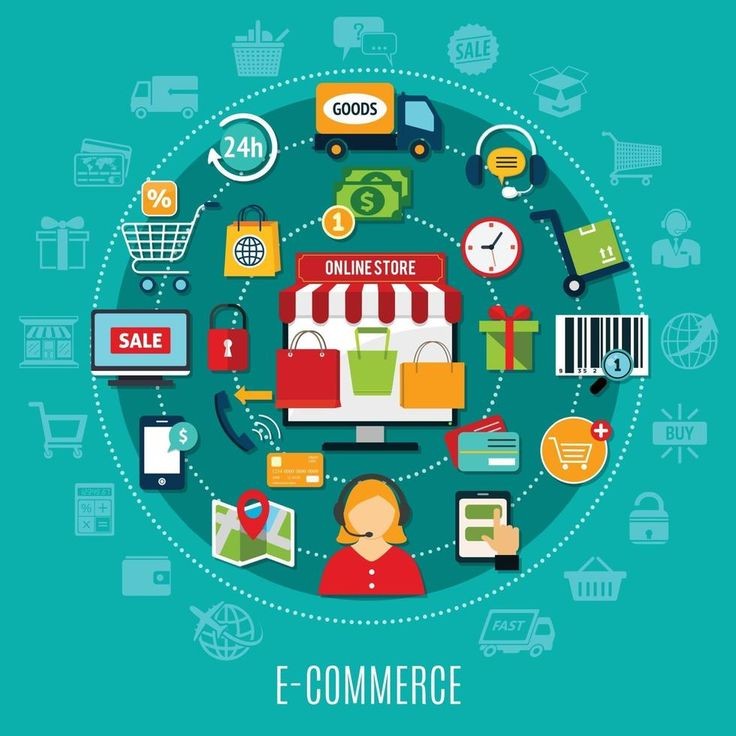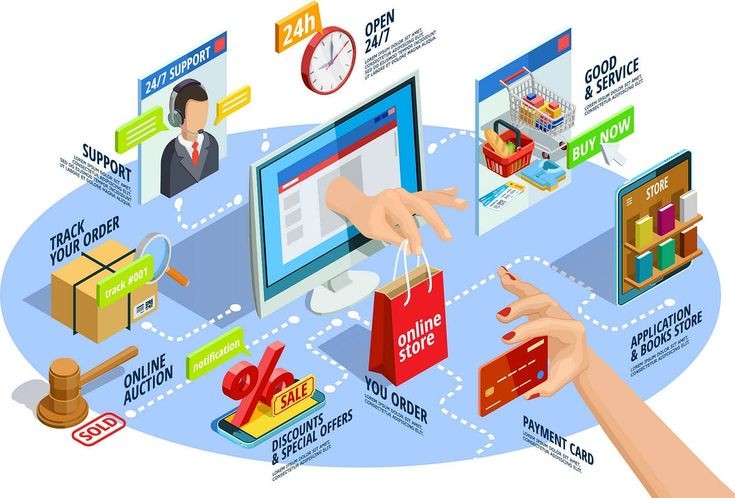Top 15 E-Commerce Trends in 2025
E-commerce trends are rapidly evolving, bringing new opportunities and innovative experiences for businesses and customers alike. As we step into 2025, these trends are set to redefine the future of online shopping, from advanced technologies to shifting consumer behaviors. In this blog, we’ll explore the most impactful e-commerce trends shaping the industry and provide insights on how businesses can embrace these changes to stay ahead of the competition and thrive in the digital marketplace.

1. Personalized Shopping Experiences
E-commerce trends in 2025 highlight that personalization is more important than ever. Customers expect online stores to understand their preferences and offer tailored recommendations. With advanced AI and machine learning, platforms can deliver highly personalized shopping experiences and increase customer satisfaction.

- Suggest products based on browsing history.
- Send personalized email campaigns.
- Offer dynamic pricing based on customer behavior.
Tip for Businesses: Use tools like customer data platforms (CDPs) to gather insights and create personalized experiences. This builds customer loyalty and increases sales.
2. Voice Commerce
E-commerce trends show that voice commerce is becoming a key driver with the growing popularity of voice assistants like Alexa, Google Assistant, and Siri. Shoppers use voice commands to search for products, make purchases, and track orders hands-free.

- Search for products.
- Add items to their carts.
- Complete purchases hands-free.
Tip for Businesses: Optimize your website for voice search by focusing on natural language keywords and ensuring quick load times.
3. Sustainable Shopping
E-commerce trends show that eco-conscious customers now demand sustainable practices. Online stores are embracing eco-friendly packaging, ethical sourcing, and greener operations.

- Using biodegradable or recyclable packaging.
- Offering carbon-neutral shipping options.
- Highlighting eco-friendly products.
Tip for Businesses: Showcase your sustainability efforts on product pages and in marketing campaigns to attract environmentally aware shoppers.
4. Social Commerce
E-commerce trends highlight how social media platforms like Instagram, Facebook, and TikTok are transforming into e-commerce powerhouses. With features like shoppable posts and live-stream shopping, customers can shop seamlessly while browsing their feeds.

- Discover new products effortlessly.
- Purchase items without leaving the app.
- Engage with brands directly through comments and DMs.
Tip for Businesses: Invest in social media advertising and leverage influencer partnerships to drive traffic and sales.
5. Augmented Reality (AR) for Product Visualization
E-commerce trends emphasize the growing use of AR technology, allowing customers to visualize products in their real environment before purchasing. This is especially beneficial for furniture, home decor, and fashion.
- Furniture and home décor.
- Fashion and accessories.
- Beauty products.
Tip for Businesses: Integrate AR features into your website or app to enhance the shopping experience and reduce return rates.
6. Mobile-First Shopping
E-commerce trends for 2025 reveal that mobile devices dominate traffic, with shoppers expecting seamless experiences on their smartphones. This includes fast loading times, user-friendly interfaces, and secure payment options.

- Fast-loading mobile websites.
- Easy navigation and checkout.
- Mobile-friendly payment options.
Tip for Businesses: Prioritize mobile optimization by using responsive design and offering digital wallets like Google Pay and Apple Pay.
7. Subscription-Based Models
E-commerce trends show a surge in subscription services across industries, from fashion to food. Customers appreciate the convenience of personalized deliveries, consistent product availability, and time savings.

- Regular deliveries of essentials.
- Exclusive discounts for members.
- Personalized subscription boxes.
Tip for Businesses: Explore subscription options for your products to create recurring revenue streams and improve customer retention.
8. Artificial Intelligence (AI) for Customer Support
E-commerce trends highlight how AI-powered chatbots and virtual assistants are revolutionizing customer service by providing instant responses, personalized recommendations, and 24/7 support.

- Instant responses to queries.
- 24/7 support availability.
- Seamless issue resolution.
Tip for Businesses: Implement AI tools to improve customer satisfaction and reduce operational costs.
9. Cryptocurrency Payments
E-commerce trends indicate that as digital currencies gain mainstream acceptance, platforms are beginning to accept cryptocurrency payments. Benefits include faster transactions, lower fees, and attracting tech-savvy customers.

- Faster and more secure transactions.
- Attracting tech-savvy and global customers.
- Lower transaction fees compared to traditional methods.
Tip for Businesses: Offer cryptocurrency payment options to cater to a growing market of crypto enthusiasts.
10. Same-Day and Hyperlocal Delivery
E-commerce trends show that fast delivery is now an expectation, not a luxury. Businesses are partnering with local logistics providers to offer quicker, more efficient shipping options to meet customer demands.
- Deliver products on the same day.
- Offer hyperlocal delivery for nearby customers.
- Enhance convenience and satisfaction.
Tip for Businesses: Optimize your supply chain and collaborate with delivery services to offer faster shipping options.
11. AI-Driven Inventory Management
E-commerce trends reveal that efficient inventory management is key to meeting customer demand without overstocking. AI helps by predicting trends, optimizing stock levels, and automating replenishment.

- Predicting demand trends.
- Managing stock levels in real time.
- Reducing storage and operational costs.
Tip for Businesses: Adopt AI-powered inventory systems to streamline your operations and improve profitability.
12. Rise of Niche Markets
E-commerce trends show that businesses are shifting from broad targeting to focusing on niche markets. These include specialized products, personalized experiences, and catering to specific customer needs.
- Vegan products.
- Handmade or artisanal items.
- Products for specific hobbies or interests.
Tip for Businesses: Identify underserved niches and tailor your offerings to meet their unique needs.
13. Global E-Commerce Expansion
E-commerce trends highlight how improved logistics and multilingual websites are making cross-border shopping easier than ever. Businesses can expand their reach, tap into global markets, and provide a seamless shopping experience for international customers.
- Tap into new markets.
- Cater to international customers with localized content.
- Provide multiple currency options.
Tip for Businesses: Use tools like Shopify Markets or WooCommerce Multilingual to simplify global expansion.
14. AI-Powered Product Recommendations
E-commerce trends show that customers appreciate smart product suggestions tailored to their interests. AI enables platforms to offer personalized recommendations, enhance customer experience, and drive sales.
- Analyze purchase history.
- Recommend complementary items.
- Boost average order values.
Tip for Businesses: Implement AI recommendation engines to create a more engaging shopping experience.
15. Gamification in E-Commerce
E-commerce trends reveal that gamification adds fun and interactivity to online shopping. Popular techniques include loyalty programs, challenges, and reward systems to engage customers and boost retention.
- Reward points for purchases.
- Spin-the-wheel discounts.
- Leaderboards for loyal customers.
Tip for Businesses: Incorporate gamified elements to make shopping enjoyable and drive customer engagement.
Conclusion
The e-commerce landscape in 2025 is dynamic and customer-centric. By adopting these e-commerce trends—from personalization and AI-driven tools to sustainable practices and mobile-first strategies—businesses can thrive in the competitive online market.
Stay updated with these e-commerce trends and take proactive steps to integrate them into your business strategy. The future of online shopping is here, and it’s exciting!
